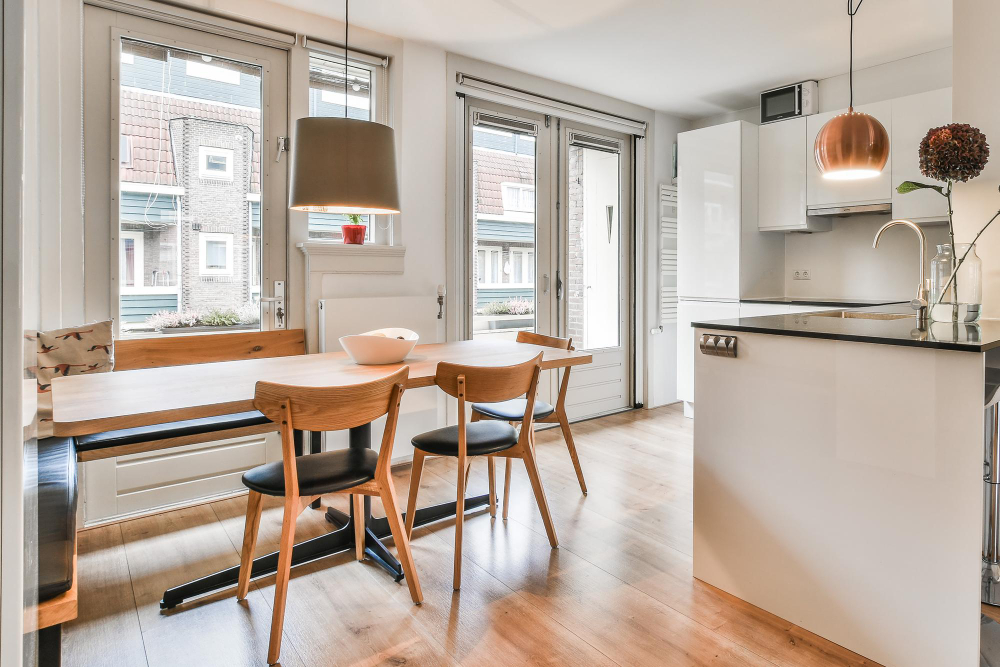

Living in a small apartment doesn't mean sacrificing comfort or style. With the right techniques and design choices, you can transform even the most compact living space into an open, airy environment that feels much larger than its square footage suggests.
Whether you're a college student, young professional, or simply prefer smaller living spaces, these proven strategies will help you maximize every inch while creating a home that feels both functional and inviting. From clever furniture arrangements to strategic use of color and light, small-space living can be both practical and beautiful.
Light colors are your best friend when it comes to creating the illusion of space. White, cream, soft grays, and pale pastels reflect natural light and make walls appear to recede, giving your apartment an instantly more open feel.
Paint your walls in light, neutral tones and extend this color palette to your furniture and decor. A monochromatic or near-monochromatic color scheme creates visual continuity that tricks the eye into perceiving more space than actually exists.
Consider painting your ceiling the same light color as your walls, or even a shade lighter. This eliminates visual boundaries and creates the impression of higher ceilings and more vertical space.
Natural light is perhaps the most powerful tool for making any space feel larger. Remove heavy curtains and replace them with sheer panels or light-filtering blinds that allow maximum light while maintaining privacy.
Keep windows unobstructed whenever possible. Avoid placing large furniture pieces directly in front of windows, and choose window treatments that can be pulled completely to the sides during the day.
If privacy isn't a concern, consider leaving windows completely bare during daylight hours. The uninterrupted view to the outside world extends your visual space beyond the apartment's physical boundaries.
Every piece of furniture in a small apartment should serve multiple purposes. An ottoman with hidden storage can function as seating, a coffee table, and a place to store blankets or books. A dining table that doubles as a workspace eliminates the need for a separate desk.
Look for furniture with built-in storage solutions. Bed frames with drawers underneath, coffee tables with shelving, and benches with storage compartments help you stay organized while reducing clutter.
Consider furniture that can be easily moved or reconfigured. Lightweight chairs that can be stacked or nested, folding tables, and modular seating allow you to adapt your space for different activities and occasions.
When floor space is limited, think vertically. Install shelving that reaches toward the ceiling to draw the eye upward and create the impression of height. Tall, narrow bookcases and storage units take up minimal floor space while providing maximum storage capacity.
Use wall-mounted shelves, hooks, and organizers to keep belongings off surfaces and floors. Floating shelves create storage without the visual weight of traditional bookcases, maintaining an open, airy feel.
Don't forget about the space above doorways and in corners. High shelves for items you don't use daily can provide valuable storage without cluttering your living areas.
Mirrors are one of the most effective tools for creating the illusion of space. A large mirror on a focal wall can visually double the size of a room by reflecting light and creating depth.
Position mirrors opposite windows to reflect natural light throughout the space. This not only makes the room brighter but also creates the impression of additional windows and outdoor views.
Consider mirrored furniture pieces, such as side tables or wardrobes, which provide function while contributing to the spacious feel of your apartment.
Clutter is the enemy of spacious-feeling spaces. Adopt a minimalist approach to decorating and keep surfaces as clear as possible. Every item in your apartment should have a designated place and purpose.
Implement the "one in, one out" rule: when you bring something new into your apartment, remove something else. This prevents accumulation and helps maintain the open, uncluttered aesthetic essential for small-space living.
Regular decluttering sessions will help you maintain a sense of spaciousness. Donate or sell items you no longer need or use, and be honest about what truly adds value to your daily life.
Selecting appropriately scaled furniture is crucial in small spaces. Oversized furniture can overwhelm a room and make it feel cramped, while furniture that's too small can look lost and create a choppy visual flow.
Measure your space carefully before purchasing furniture, and leave adequate walkways between pieces. A few well-chosen, properly scaled pieces will always look better than many smaller items scattered throughout the space.
Consider furniture with exposed legs, which allows light to flow underneath and creates a sense of visual lightness. Avoid furniture that sits directly on the floor, as this can make pieces appear heavy and cumbersome.
Creating a spacious-feeling home starts with finding the right apartment. The layout, natural light, and existing features of your space will determine how successfully you can implement these space-expanding strategies.
If you're looking for apartments for rent in Gainesville, FL, contact The Mayfair Apartments today to schedule a personal tour. Our thoughtfully designed units provide the perfect foundation for creating a comfortable, spacious-feeling home, regardless of square footage.